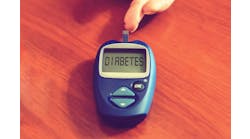A medical researcher has published an extensive review of the currently available mobile devices that are beginning to be integrated into healthcare delivery and care management, and the challenges around their integration.
In an article published online on September 5 in The New England Journal of Medicine, Ida Sim, M.D., Ph.D., a primary care physician who also co-directs informatics and research innovation at the Clinical and Translational Sciences Institute, and is Director of Digital Health for the Division of General Internal Medicine, at the University of California San Francisco (UCSF), provides an overview of the current landscape around mobile devices.
As Dr. Sim writes, “Mobile health—the application of sensors, mobile apps, social media, and location-tracking technology to obtain data pertinent to wellness and disease diagnosis, prevention, and management — makes it theoretically possible to monitor and intervene whenever and wherever acute and chronic medical conditions occur. With 81% of North American adults owning a smartphone,1 this frontier could be reached in the foreseeable future in the United States and is particularly relevant to the management of chronic diseases. More than 40% of U.S. adults have two or more chronic conditions2 and chronic conditions now account for 71% of all U.S. health care spending,3 so the promise of mobile health is especially attractive.”
Dr. Sim looks at passive and active sensors, with the smartphone “the most ubiquitous” type of passive sensor; wearable devices also fall into that category. Among types of active sensors, she writes, “The ubiquity of personal devices makes possible an alternative approach called ecologic momentary assessment. opens in new tab (EMA) that is well suited to capturing some types of patient-reported outcomes. EMA involves “repeated sampling of subjects’ current behaviors and experiences in real time, in subjects’ natural environments.”18 EMAs are less subject to recall bias than infrequently administered questionnaires and can be administered multiple times a day to capture short-term variations in responses. EMAs range from simple text-message prompts to short one- or two-item app-based questions and have been used to collect information on chronic pain,19 anxiety,20 substance-use disorders,21 and many other conditions.” Functional assessments via active sensors are also discussed. Then there are also the categories of digital biomarkers and digital therapeutics and diagnostics.
What about the challenges involved? “At the front lines of care, two challenges dominate the implementation of mobile health,” Dr. Sim writes. “The first is the vast quantity of data. Ancillary staff can help review and triage data, and visualization tools can mitigate the cognitive burden of interpreting the data. However, the most effective response is to develop and show to clinicians only those digital biomarkers that inform clinical action or clinical understanding (e.g., temporal and severity profiles of patient symptoms). Simultaneously, these biomarkers must be of sufficient direct value to patients to justify their participation in the data-collection effort. None of this is easy. Greater investment in the science of digital biomarkers is needed to evaluate the value of mobile health data for clinical use.
Meanwhile, Dr. Sim notes, “The second (and related) challenge is how the inclusion and presentation of data will fit into an already complicated and overstretched workflow. Clinicians cannot be expected to log in to separate websites for every sensor or app their patients are using. That said, integration with the electronic health record (EHR) is currently extremely challenging and costly.” She adds that “A recent development may offer hope: the federal government’s “meaningful use” requirements for EHR certification are calling for greater interoperability through an emerging data-exchange standard called Fast Healthcare Interoperability Resources (FHIR).”
Dr. Sim sees great potential in FHIR as a foundation for “integrating the output of third-party digital health tools directly into the EHR workflow without requiring that the output be written into the database of the EHR, since such a requirement would trigger often prohibitive legal and security concerns.” But she sees broad logistical and legal challenges for patient care organizations that might provide patients with sensors and apps, and adds that additional staffing might be needed to do that provisioning.
She also sees complications around the fact that “Higher-risk mobile health technologies are considered medical devices under the Food, Drug, and Cosmetic Act. The FDA regulates medical devices under processes that were designed for medical-grade hardware devices, such as hip implants, with known physical properties that change little after market release. Mobile health technologies, in contrast, often combine hardware (e.g., a glucometer) with software (e.g., algorithms for the management of type 1 diabetes) and can be extremely dynamic, with frequent hardware and software updates. A different regulatory approach is needed,” she asserts. And she adds that, when it comes to digital biomarkers, “[T]he accuracy of digital biomarkers also requires validation.”
Ultimately, Dr. Sim states, “Clinicians, patients, and payers would benefit from digital health formularies that list sensors and apps that are vetted for clinical use, much like medication formularies for drugs. The latest of several attempts to launch such a digital health formulary is by Express Scripts. Other efforts include the establishment of principles and guidelines for app development and rigorous evaluation, but best practices for screening, integrating, and appraising apps remain to be established.”
Still, the market growth in this area will continue to push the boundaries, Dr. Sim states, as she notes that “[T]he digital health sector saw a record $8.1 billion in investments in 2018.”
In the end, Dr. Sim writes, “Mobile health technologies are evolving from descriptive monitoring tools to digital diagnostics and therapeutics that synergize tracking with behavioral and other interventions to directly affect health outcomes. Major challenges include the discovery and validation of meaningful digital biomarkers, regulation of and payment for mobile health technologies, and their integration into frontline care. Clearer articulations are needed of how mobile health technology can concretely affect clinical outcomes, along with more rigorous evaluations of clinical effectiveness.”

